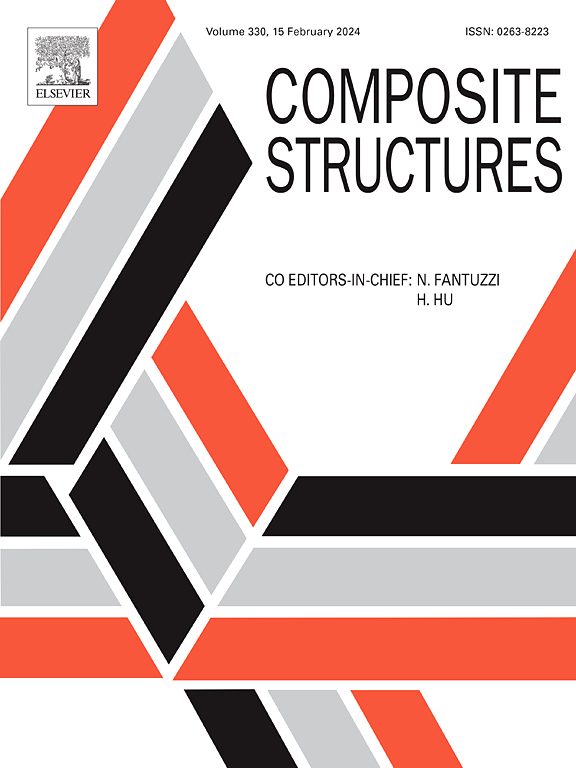A nonlinear thermo-mechanical coupling model for simulating functionally graded nose cones under aerodynamic environment
IF 6.3
2区 材料科学
Q1 MATERIALS SCIENCE, COMPOSITES
引用次数: 0
Abstract
A nonlinear thermo-mechanical coupling model (NTMCM) based on the finite element method (FEM) is presented to simulate the nonlinear thermo-mechanical coupling behavior of functionally graded nose cone structures under hypersonic flight conditions. The model accounts for the temperature dependence and spatial variation of material properties, with the effective properties of functionally graded materials (FGMs) determined using the rule of mixtures. The Newton–Raphson iterative technique is employed to solve the discretized nonlinear thermo-mechanical coupling equations. The accuracy of the proposed model is validated through comparison with numerical results reported in the literature. Combining CFD++, aerodynamic forces and heating from the external flow field are obtained as boundary conditions for the thermo-mechanical coupling analysis of the structure, and the nearest-neighbor interpolation method is employed to transfer the aerodynamic-structural interface information. Numerical simulations are performed to investigate the effects of flight speed and material gradient index on the nonlinear thermo-mechanical coupling responses of the nose cone structure. The results show that the temperature and stress are primarily concentrated in the windward head region of the structure, both of which increase with flight speed. Additionally, a higher material gradient index significantly reduces the internal temperature gradient of the nose cone, enhancing its thermal protection performance. This study provides a novel computational tool to guide the application of FGMs in thermal protection systems for hypersonic vehicles.
求助全文
约1分钟内获得全文
求助全文
来源期刊

Composite Structures
工程技术-材料科学:复合
CiteScore
12.00
自引率
12.70%
发文量
1246
审稿时长
78 days
期刊介绍:
The past few decades have seen outstanding advances in the use of composite materials in structural applications. There can be little doubt that, within engineering circles, composites have revolutionised traditional design concepts and made possible an unparalleled range of new and exciting possibilities as viable materials for construction. Composite Structures, an International Journal, disseminates knowledge between users, manufacturers, designers and researchers involved in structures or structural components manufactured using composite materials.
The journal publishes papers which contribute to knowledge in the use of composite materials in engineering structures. Papers deal with design, research and development studies, experimental investigations, theoretical analysis and fabrication techniques relevant to the application of composites in load-bearing components for assemblies, ranging from individual components such as plates and shells to complete composite structures.
 求助内容:
求助内容: 应助结果提醒方式:
应助结果提醒方式:


